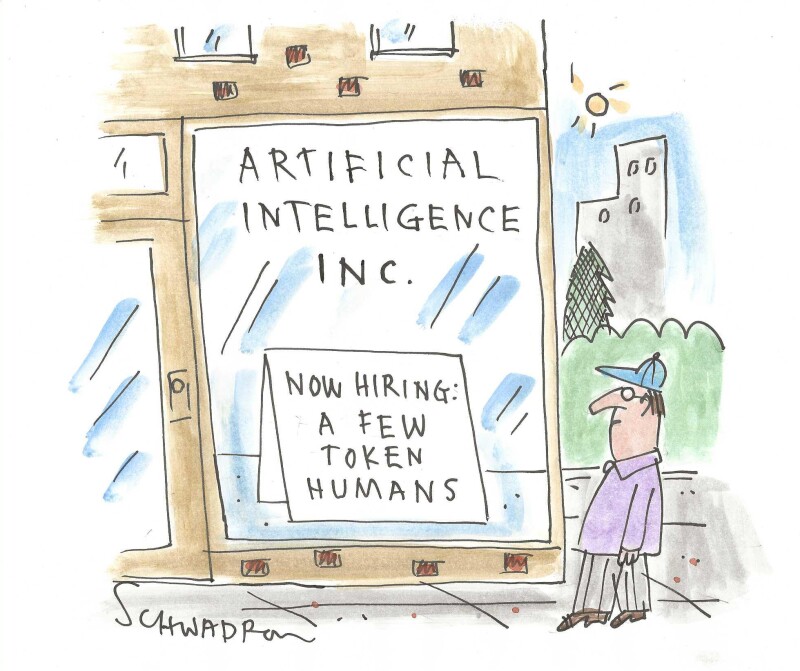The AI Revolution: Balancing Innovation and Employment
Author: Sean Higgins

The rapid advancement of artificial intelligence (AI) has sparked significant debate regarding its potential impact on the labor market. As technological innovations redefine industries, many fear that automation will lead to widespread job losses, displacing workers across various sectors. However, history presents a different narrative, suggesting that while technology disrupts, it also paves the way for new job opportunities and economic growth.
Historically, each wave of innovation—from the industrial revolution to the digital age—has incited similar anxieties about job displacement. For instance, when mechanized looms were introduced in the textile industry during the 18th century, many skilled artisans feared the loss of their livelihoods. Yet, these innovations ultimately led to increased production efficiency, the emergence of new job categories, and higher demands for skilled labor. This pattern raises an essential question: will AI be different?
Several experts argue that AI's integration into the workforce can generate significant economic benefits. According to a recent report by the McKinsey Global Institute, AI could contribute up to $13 trillion to the global economy by 2030, enhancing productivity and creating new markets. The key to unlocking this potential lies in how businesses and policymakers choose to implement AI technologies, ensuring they complement human labor rather than replace it entirely.

An illustration depicting the balance between technology and human labor.
However, the concerns surrounding AI are not baseless. A report from the World Economic Forum estimates that by 2025, automation could displace 85 million jobs while creating 97 million new roles. This transition will require workers to adapt quickly to new skill sets and industries, placing immense pressure on educational systems and workforce training programs to prepare individuals for the challenges ahead.
In parallel, there are important conversations taking place about the ethical implications of AI. As machine learning algorithms become more integrated into decision-making processes, issues such as bias, privacy, and accountability come to the forefront. For instance, AI systems trained on historical data may inadvertently perpetuate existing social biases, leading to unfair treatment of certain groups in employment and other sectors. These concerns necessitate a robust framework governing AI deployment to mitigate risks while encouraging innovation.
Moreover, the political landscape and regulatory environment play crucial roles in shaping the future of work in an AI-driven world. For example, in regions where labor protections are weak, the impact of AI may disproportionately affect lower-skilled workers. Conversely, regions with robust frameworks for education and worker retraining might thrive, harnessing AI advancements to boost economic growth without significant job losses. The challenge lies in creating policies that ensure equitable access to the benefits of AI.
Showcasing the latest Qi2 accessories at IFA 2025, a testament to how technology continues to evolve.
As we look to the future, several emerging trends hint at how AI might reshape the job market. The rise in demand for roles in AI development, data analysis, and related fields shows a clear shift in required skill sets. Workers in traditional sectors may find themselves needing to diversify their skills through continuous learning and adaptation, aligning with industry needs.
The integration of AI also presents opportunities for creating hybrid roles that combine human empathy and machine efficiency. For instance, in healthcare, AI can assist doctors with diagnostics, but the human touch remains indispensable in patient care. These hybrid roles could lead to greater job satisfaction and improved patient outcomes, exemplifying the potential benefits of technology augmentation.
Additionally, sectors like creative arts and education are also seeing the potential of AI. Tools that can analyze audience preferences or personalize learning experiences demonstrate how AI can enrich traditional roles rather than replace them. This suggests a future where collaboration between humans and AI enhances productivity and innovation across various domains.

The rise of AI in various sectors signifies a paradigm shift in job creation and economic strategy.
In conclusion, while AI undoubtedly poses challenges to the current workforce, history indicates that transformative technologies often lead to new opportunities. By implementing policies that emphasize education, retraining, and ethical standards, society can navigate the complex landscape of AI integration. Ultimately, the future of work will depend on our ability to adapt and leverage technology as an enabler rather than a displacer of jobs.